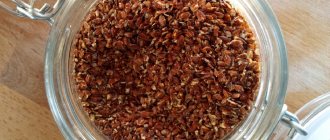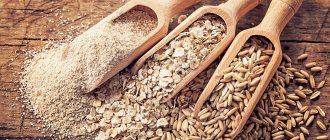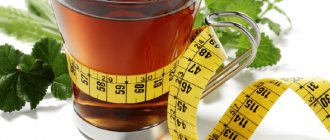At the beginning of the last century, a fashion arose for fasting for medicinal purposes. To a large extent, the problem of forced hunger was solved, so civilization wanted to use it as a medicine.
Gradually, the method migrated from alternative medicine to the masses. Young beauties and older women are not afraid to try questionable methods on themselves in order to get rid of extra pounds. It’s scary to imagine how many people agree to do a lot, just not to seek help from specialists.
Proponents of the technique attract newcomers with sky-high results, come up with clever ways to refuse food and water, calling their development a “panacea” for all problems.
Let's approach the matter wisely and find out what is meant by therapeutic fasting, study its pros and cons, learn about existing contraindications and understand the varieties of this approach to losing weight and improving the health of the body.
Proper fasting treatment involves turning to specialists, focusing on achieving results and following all the principles of the system. In order to improve health and lose weight, a person voluntarily refuses food, and sometimes water too. During the entire duration of the program, it is forbidden to eat food at all. And this must be done until the body is completely cleansed. The timing of abstinence from food depends on individual characteristics.
Features of fasting
Before fasting, you have to prepare yourself mentally. A person should be in a good mood, have a positive attitude towards life and enjoy every day. Only the right attitude will help prepare the body for cleansing. The psychological factor plays a huge role in the smooth functioning of all organ systems. If you are in a state of depression, apathy or even anger, you may not expect results in the form of weight loss or rejuvenation. Negative emotions impair the functioning of organs. A state of stress creates a feeling of hunger and a desire to snack. A person needs fasting for physical and psycho-emotional health. Moral purification is implied. The fasting technique involves a gradual transition from the usual diet to restrictions. Correct exit from the program is also important. The main thing is to act consistently, otherwise wrong steps will cause your health to deteriorate. Beginners should not attempt long-term fasting. The body is not able to quickly adapt to such a radical regime. It is better to give preference to short but cyclical experiments. It will take time to get used to changes in metabolism and eating behavior itself.
What diseases does hunger cure?
Proponents of the technique claim that fasting cures a person from a number of ailments:
- Cardiovascular diseases: blood pressure disorders, angina pectoris, thrombosis, post-infarction and post-stroke conditions, coronary artery disease, varicose veins, anemia.
- Weight problems, gout, scurvy, jaundice.
- Diseases of the digestive tract: gastritis, colitis, ulcers, stool disorders.
- Diseases of the respiratory system: asthma, bronchitis, pharyngitis, sinus inflammation, pneumonia.
- Hormonal disorders: diabetes mellitus, goiter, prostate adenoma.
- Diseases of the nervous system: chronic migraine, sleep disorders, neuroses.
- Mental illnesses: depression, schizophrenia, epilepsy.
- Infections: flu, sore throat, smallpox.
- Eye diseases: glaucoma, keratitis, stye.
Is it possible to drink coffee while fasting?
This technique is divided into two types. In the first case, you are allowed to drink water and drinks, in the other - a complete abstinence from liquids.
Drinks help get rid of attacks of nausea, dizziness and dull the feeling of hunger. Drinking coffee is only possible for short-term options. If the goal is to rejuvenate the body and lose extra pounds, then you will have to choose a long hunger strike, giving up liquids.
Breaking fast without harm to health
For health, the correct exit from any diet is necessary, and after a long fast, the gradual introduction of foods into the diet is simply vital. The period of release must be no less than that during which the hunger strike lasted.
During this period it is necessary:
- continue to do cleansing enemas every other day;
- give up sugar, flour products, alcohol, meat, fats;
- lead an active lifestyle and go for walks.
Let's look at how to gradually introduce new foods into your diet.
First week
In the first week of breaking fast, freshly squeezed fruit and vegetable juices, half diluted with water, are allowed. Beetroot and grape juices are not suitable for 1 week of fasting, as they contain a large amount of sugar. You are allowed to drink up to 2 liters of juice per day, a glass for one meal.
Second week
At week 2, only juices remain in the diet, but you can add pulp to them and not dilute them with water.
Third week
In week 3, the following dishes are allowed:
- buckwheat and rice porridge with the addition of vegetables, cooked without milk and sugar;
- salads from fresh and boiled vegetables without salt and oil.
At the last stage of losing weight, you need to try to resist the desire to eat something tasty, the reward for this will be getting rid of excess weight and a rejuvenated, full of energy body. Fasting is not an easy way to get rid of extra pounds, but it has a lasting and long-lasting effect and will help you maintain a beautiful figure for a long time, and most importantly, health.
What is therapeutic fasting
Let us repeat, therapeutic fasting is a voluntary refusal of food in order to improve the health of the body and get rid of the hated kilograms. The so-called velvet fasting according to Ziganshin is very popular among supporters of extreme methods. Another system that became famous was proposed by Paul Bragg. The system includes recommendations for observing fasts and lists of foods that should be abandoned forever. In previous articles, we talked to you about fasting, the author of which is E. Osumi. According to his theory, it was divided into schemes: 16/8, 12/12, 14/10, 20/4, 36, 5/2 hours. But today we are talking about other two types: water and dry.
On the water
Water fasting involves abstaining from food. Drinking the daily amount of water is a prerequisite for this type of diet. Due to the deprivation of the natural function of digesting solid food, the digestive tract begins to cleanse itself. First, feces are removed, then waste and toxins. The intestinal microflora is normalized, since pathogenic organisms are not able to exist in conditions of lack of nutrition.
Long or cyclical courses without food trigger autophagy processes. The cells begin to cleanse themselves. In this case, harmful components are removed, thus explaining recovery from certain diseases. Some adhere to a soda and water fast. The water system of morning fasting by Ishihara Yumi is very popular.
You can lose up to 1 kilogram per day on this diet. But such large numbers for one day are frightening and raise doubts about the ability to maintain the result after leaving the diet.
Dry medicinal
Dry fasting involves complete abstinence from food and water. Fortunately, even the most outspoken fighters against waste and toxins do not advocate using this method for more than two days. It is possible to live without food for some time, but without water, you are more likely to develop dehydration. Water is the force that gives organisms life. We must not forget this simple rule.
Varieties:
- Complete dry fasting - author L.A. Shchennikov. Lasts 7, 9, 11 days.
- Cascade - author V.P. Lavrova.
- Fractional (intermittent) - author S.I. Filonova.
The essence of the water fasting method for 7 days
Therapeutic fasting was developed quite a long time ago, in 1929, when alternative medicine was just in its infancy. This method of cleansing and renewing the body is based on the idea that without food, the body will awaken the immune system, which will begin to fight toxins and diseases.
This is indeed true, but the main point during the 7-day fast is to drink plenty of fluid, which also contributes to positive changes in the body.
In this article we will highlight the main useful points for proper fasting. Without further ado, let's get started.
You will also like the article: Nadi Shodhana Pranayama - features and technique.
Preparing for a 7-day water fast
When should you start fasting? Sometimes a person decides to go on such a drastic diet because of the ineffectiveness of traditional medicine and the desire to transform himself.
Fasting is also chosen by those who want to lose weight quickly, because a week without food burns excess weight efficiently and painlessly.
Before such a long distance, that is, before a whole week without food, a water fast of 1, 2 and 3 days is a good idea.
- Give up alcohol, cigarettes and starchy, sweet foods about 10 days before the procedure, during which time your body will eliminate everything that may interfere with fasting.
- Replenish your diet with fruits, vegetables and cottage cheese products.
- It is necessary to create a comfortable environment. Ideally, the chosen week should fall on your vacation or any other time when you are as calm as possible and in harmony with the environment.
- It is very important to relax, since stress such as hunger stimulates stress, and you must reduce external stimuli to nothing.
During a week-long water fast, you need to retire to sort out your problems. This way we will achieve both physical and spiritual renewal.
The right attitude is the key to everything, to reinforce positive motivation, we are attaching photos of several people who tried water fasting for 7 days:
Results of water fasting for 7 days
- On the first day you will feel light and uplifted. Such euphoria will become a cheerful incentive to continue fasting, but let’s not hide it, there will be moments along your path when you want to give up fasting. It’s all because of the power of habit, which hits hard on motivation.
- After a day and a half without food, you may feel weak and dizzy. You need to endure this stage of the crisis, since many people break down and stop the diet at this stage.
Try to moderate your physical activity, drink a lot of water and remember that the discomfort will go away, giving way to a feeling of lightness.
Monitor your condition, and if you suddenly feel too bad, stop the fast immediately. The purpose of the procedure is not to torture your body, but to renew and transform it.
- The third day is much easier for many. Slight nausea may occur. If you have muscle pain, do a simple warm-up to get the blood flowing.
We drink a lot of warm water and think about the improvements that are actively happening inside you. You should drink 250 ml of heated liquid per hour; this norm will not make you feel critically ill.
- After the third day, you cross the point where the mind still asks for a standard diet. Then comes a feeling of freedom, which is associated with the fact that the body begins to remove all harmful toxins.
However, weakness can still creep in. You should move forward, not forgetting to drink water. Light physical activity will also not be superfluous.
Previously, we talked about inverted asanas in yoga and the technique of performing them.
Breaking out of water fasting for 7 days
And now 7 days are behind us. If you were able to overcome this long and thorny path, do not indulge in everyday food or alcohol and cigarettes, it is dangerous.
You must gradually rebuild your renewed body to the usual food, in this regard, we advise you to go on a fruit and vegetable diet for a couple of days.
For breakfast after a hunger strike, prepare a light vegetable salad, wash it down with water or diluted juice. For lunch, some boiled potatoes or carrots, no meat, no fish. Drink plenty of fluids to help your body get back on track with your daily routine.
Benefits and harm to the body
Let's talk about the benefits of fasting:
- Respite for the gastrointestinal tract. Due to the abundance of food, a person often does not control his appetite. Overeating often occurs, so rest for the digestive system is also necessary.
- Metabolic restructuring. During a hunger strike, the body uses up its own internal energy reserves. Fat reserves begin to decrease, which leads to weight loss.
- Longevity. The rejuvenation effect is achieved through the effects of hunger at the cellular and molecular levels.
- Cure various diseases, the list of which we provided above.
It turns out that the technique is useful for weight loss, rejuvenation and healing. But, do not forget about the other side of the coin.
Flaws:
- The risk of muscle loss increases. During a hunger strike, the body does not immediately begin to break down fats. Glucose and proteins are the first to be shot. Long-term refusal of food leads to muscular dystrophy.
- Poisoning with ketone bodies - fat breakdown products. With a lack of food, the level of glucose in the blood decreases - a lack of insulin develops. Fats cannot undergo complete oxidation under such conditions. This is how acidosis occurs, the main symptom of which is the smell of acetone from the oral cavity. In this case, we can talk about increasing intoxication.
- Appetite disorders. Long-term refusal of food results in the appearance of an uncontrollable feeling of hunger. It becomes difficult for a person to control his appetite, and regular overeating begins.
- Modern doctors argue about the accumulation of toxins. They claim that the lymphatic, urinary and circulatory systems cope with their own functions without any additional techniques.
How to fast properly
Before a fasting diet, it is better to let the body get used to it by making the diet lighter. All fatty foods, animal proteins, baked goods and sweets are completely excluded from the menu. You should eat fruits and vegetables, but without overeating. To fast properly, you should familiarize yourself with the general recommendations.
How long can you fast without harm to your health?
Refusing food for more than three days can cause severe deterioration in health. Prolonged fasting promotes the breakdown of proteins and glucose found in the muscles. Muscular dystrophy develops.
An additional negative effect is the lack of nutrients and vitamins. The functioning of all body systems is disrupted. Although therapeutic fasting is a health program, it must be used very carefully.
How to prepare
Preparation in duration should take half of the total fasting time, and at best be equal. The preparatory stage involves a gradual reduction in the amount of food eaten. The hunger strike process is divided into three stages.
First stage
At the first stage, food arousal increases. It lasts about two days. An unprepared psycho-emotional background causes the development of anxiety. This is more typical for beginners.
The first stage is characterized by attacks of hunger, dizziness, stomach pain, rumbling, increased sensitivity to food, and worsening mood. A person begins to get irritated by any mention of food or the sight of dishes.
Second stage
The phenomenon of ketoacidosis increases and lasts about a week. There is a “metallic” taste in the mouth, the tongue becomes covered with a white coating, and hunger is dulled. Exacerbation of chronic diseases often occurs. It is recommended to refrain from physical activity and stay in the fresh air longer.
Third stage
Adaptation to the lack of food occurs. Clinical manifestations of diseases disappear. Daily weight loss is about half a kilogram.
Therapeutic fasting on water
The duration of therapeutic water fasting ranges from two weeks to a month. It is during this period that you can get rid of toxins and lose weight. Few people manage to withstand such a long period without food at once, so experts recommend starting with fasting days on the water. These days you can check how the body reacts to refusing food, and gradually get used to the feeling of hunger.
Attention! Fasting days on the water are the safest way of healthy fasting.
Proper water fasting at home is compliance with the following principles:
- you cannot consume any foods, fruits, vegetables, drinks, and even tea;
- You can only drink water, it is better to do this in small sips so as not to feel nauseous;
- Any water is suitable for a water fast: mineral, spring, purified, carbonated;
- You can drink up to 3 liters of water per day (but not less than 2 liters).
During fasting, you should be prepared for the fact that unpleasant sensations will arise; you need to psychologically prepare yourself for them and not give in to panic.
Video
Unpleasant sensations may manifest themselves as follows:
- from the first days of fasting, a white coating appears on the tongue - this happens because the body quickly cleanses itself;
- after a few days, nasal breathing may become impaired due to the formation of a large amount of mucus;
- the color of the stool changes almost immediately, sometimes it contains incomprehensible inclusions and even foreign bodies.
Usually, discomfort lasts no more than a week; if it continues longer, you should consult a doctor.
To alleviate your condition, you can use the following methods:
- spend more time outdoors;
- take warm baths in the evenings;
- brush your teeth and tongue more often, removing white plaque from it with a brush;
- throughout the fast, do cleansing enemas with salt every other day.
If on the 5th-7th day of fasting headaches, attacks of nausea, insomnia and tachycardia begin, it should be stopped, but this must be done gradually. It may not be possible to give up food for a long time; a week is enough for the first time. Usually during this period a person loses up to 6 kg of excess weight, if fasting is extended over a longer period, weight loss will occur much more slowly - losses can amount to 8-10 kg, but for rejuvenation this is the optimal period of abstinence from food.
Therapeutic fasting at home
At home, it is recommended to try a trial refusal to eat for 34 hours, no more than once a week, on certain days. A systematic approach will help increase the number of days to three or more.
Daily allowance
Avoiding food for one day is the safest option. A daily diet will allow the organs of the digestive system to rest and allow the microflora to recover.
Recommendations:
- Go on a fast on the weekend, giving up heavy food in advance. Try to drink more.
- Take a bath, shower. Walk more.
- Periodic practice will help get rid of headaches and dizziness.
- At the end of the program, it is recommended to prepare salads from carrots, cabbage, apples and raisins. You can season it with lemon juice.
- Keep for no longer than 24-36 hours
Three-day
The stress from the three-day course is already greater than from the previous option. It is better to start it after a one-day fast.
Recommendations:
- Give up heavy meals for a week. For three days, eat plant foods, and on the day you start the diet, do a cleansing enema.
- Take frequent baths and showers. Drink more clean water.
- Listen to your own well-being. If it’s difficult to complete the course, give up the idea.
- You need to exit the diet gradually, without overeating.
Seven days
Week-long fasting has therapeutic purposes. During this time, self-destruction of diseased unnecessary components of cells and tissues occurs, and the regeneration process begins.
Recommendations:
The preparatory stage should take at least two weeks. During this period, animal products, alcohol and sweets are excluded. In addition to cleansing the intestines, cleansing the liver is required. You can take a course of special medications.
Types of therapeutic fasting
There are different options for abstaining from eating. The options are created so that everyone who wants to get rid of excess fat can choose the optimal method for themselves. The option that corresponds to the characteristics of the body and state of health.
Therapeutic fasting for weight loss at home includes the following types:
- Dry form: performed within 1-3 days. There is a complete refusal of food and water. Used for infectious diseases, to strengthen the immune system, and for cleansing.
- Aquatic species: lasts for 3-23 days. Complete abstinence from food, mandatory drinking of water. The procedure helps to cleanse yourself of toxins, improve complexion, and improve immunity.
- Combined type: refuse food and fluids for 2-3 days. Starting from the second day, they begin to drink water. Useful for obesity and swelling.
- Stepped type: refuse food for 5-7 days. They wait for the body to switch to internal nutrition. For the next three days they eat normally. And they repeat the restriction again. Practiced for obesity, infections, chronic pathologies.
- Fractional type: fast for several cycles. They start with the dry form (first cycle): complete refusal of food and liquid for three days. For the next five days, they eat their usual foods. In the second cycle they refuse for 3 days. only from products. After three days, they return to their normal diet. The third cycle involves refusing water and food for three days. Then follows a safe way out of hunger to a normal diet. This type helps to completely cleanse the gastrointestinal tract of waste and toxins, for rejuvenation.
Breaking out of fasting
Entering a fast and sticking to it is not an easy task. But it is even more difficult to get out of it correctly. The lost kilograms will partially come back, but a competent exit will help reduce their amount.
General recommendations:
- on the first day you need to stick to a juice diet - drink only juices;
- on the second day, consume grated fruits;
- the menu for 3-4 days will be supplemented with soups and cereals;
- after a week you can eat nuts and proteins;
- Further, a dairy-vegetable diet is recommended.
Fractional nutrition and small portions
Try to eat small portions throughout the day – 5-6 times. The intervals between meals should not exceed three hours. Fractional meals in small portions are the main rule for overcoming long-term hunger.
Vegetable and fermented milk foods
After long fasts, it is recommended to adhere to a dairy-vegetable diet. Fermented milk products should be added to the diet after five days.
Compliance with time intervals
Compliance with time frames is a very important point. The longer you refuse food, the longer the recovery period will be. Even after a short-term fast, it will take several days to eat a recovery diet.
How to avoid going hungry
Hunger is not all that a person experiences when refusing food. Fatigue, weakness, decreased performance and physical activity will become indispensable companions. For these reasons, many people get frustrated and quit what they started. In order to pull yourself together in time, it is recommended to remember what motivated you in the first place. A small amount of water will help dull the feeling of hunger. You should take your mind off thoughts about food: take a walk, do what you love, do breathing exercises. Anything, but do not allow yourself to become overtired.










